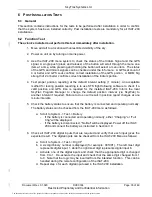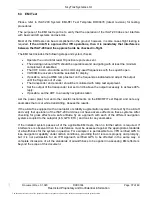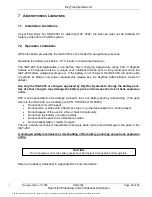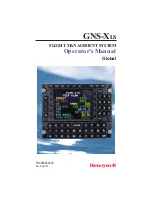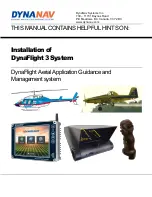
This information is generally descriptive only and is not intended to make or imply any representation, guarantee or warranty with respect to any cells
and batteries. Cell and battery designs/specifications are subject to modification without notice. Contact Panasonic for the latest information.
Panasonic
JANUARY 2007
NOTES AND PRECAUTIONS - CONTINUED
3. Equipment Design
(1) Installing Battery Packs in the Equipment
To avoid damage to the battery pack, make sure that the battery pack is positioned away from heat
sources in the equipment or in the battery charger.
(2) Mechanisms to Prevent Dropping
Be sure to use a battery pack lock mechanism to prevent the battery pack from being ejected when the
equipment is dropped or receives a sudden impact.
(3) Preventing Short Circuits and Reversed Connections
Use a terminal structure that makes it unlikely that the terminals will be shorted by metallic necklaces,
clips,
hairpins, etc. Structure the battery and the terminals to the battery in sub˜†a way that the battery
pack cannot be put in backwards when installed in the charger or the equipment.
(4) Inclusion in Other Equipment
If the battery is built into other equipment, use caution to strictly avoid designing airtight battery
compartments.
(5) Terminal Materials in the External Equipment
Use materials that are highly resistant to corrosion (such as nickel or nickel-coated copper). If contact
resistance is an issue, we recommend that you use contact plating (such as gold plating) on the
terminals.
4. Storing the Batteries
The batteries should be stored at room temperature, charged to about 30 to 50% of capacity.
We recommend that batteries be charged about once per year to prevent overdischarge.
5. Use of the Batteries
See the section on “Safety Precautions for the Lithium Ion Battery Pack.”
6. Other
The Chemical Reaction
Because batteries utilize a chemical reaction, battery performance will deteriorate over time even if
stored for a long period of time without being used. In addition, if the various usage conditions such as
charge, discharge, ambient temperature, etc. are not maintained within the specified ranges the life
expectancy of the battery may be shortened or the device in which the battery is used may be damaged
by electrolyte leakage. If the batteries cannot maintain a charge for long periods of time, even when they
are charged correctly, this may indicate it is time to change the battery.
7. Please Note
The performance and life expectancy of batteries depends heavily on how the batteries are used. In
order to ensure safety, be sure to consult with Panasonic in advance regarding battery charging and
discharging specifications and equipment structures when designing equipment that includes these
batteries.
Please Note:
Panasonic assumes no liability for problems that occur when the Notes and Precautions for use listed above
are not followed.
The document reference is online, please check the correspondence between the online documentation and the printed version.



